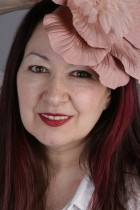Celebrities have always been a driving force in the world of media. Public relations revolves around product placement, product endorsement and celebrity sightings. In our day, it’s the producer/director/paparazzi chasing the star in question. In Cecil Beatons’ day, the stars all chased him.
It has been said about the early Beaton milieu that it was a strange//”complex social mixture of heiresses , lionized artists, leading theatrical figures and the residue of the patrician class – the leisured inhabitants of a new world created by the mechanism of publicity.” (from Cecil Beaton, a Retrospective, edited by Dr. David Mellor, Little Brown & Col, 1986) Guess who created that world? Cecil Beaton certainly had his hand in that pot. Society as we know it was so much more in Beaton’s heyday. It was a postcard of a famous actress, Lily Elsie, that sparked in the tiny tot what was to become the Beaton touch.

Heiresses, actresses, all clamoured to have their portrait taken by Cecil Beaton. His subjects included the doyennes of society, the touted famous of stage, even royalty. Things were no different for the darling of Haute Bohemia once he set his cap for New York City. This period, of Cecil Beaton in the hoi-polloi of New York is arranged as one of Beaton’s prized scrapbooks. Beaton wallpaper covers several walls. Graffiti-esque sketches line the hallways as you fall into the rabbit hole that is Beaton World.
Vogue Magazine hired him. Greta Garbo made him her lover. Audrey Hepburn , Katherine Hepburn, Marilyn Monroe all posed for him. These are photographs that basically forged the genre known today as “fashion photography”. You have seen his work for decades, perhaps on the fringes of your known universe, not knowing the provenance. Beaton stole from the masters as well. But he also worked with them. On the stage of the newly minted Metropolitan Opera, ensconced at Lincoln Center, he created a post-modern romantic/baroque mood for the set of La Traviata. Costumes and sets took flight from his pen when his inner angst took hold of his creative angel. From Lady Windermere’s Fan to My Fair Lady, Beaton sketched and molded sets, moods, costumes for Broadway, and at last! for Hollywood.

He knew the best and the brightest, and often captured a moment with his faithful tool, the camera. Not a trained photographer, Beaton launched into the métier from a painterly point of view. His voice resonates from every print, captured as he waltzed through the nobs, the bobs and the stars of Café Society, the Haute Bohemians of the Edwardian Era, and into the lap of New York
Perhaps it was amid the tangential bustle of this burg where he modernized his language. The purity of line, the drama of shadow had always been present in Beaton’s work. But from Post WWII to the 1960’s you can taste the nutmeg in the pudding without having it totally drowning in the sugar of his early years. Posing gets cleaner, sets less propped. If subtle can ever be used to describe Cecil Beaton (and no one would ever think so!), it was in New York that he perhaps found that edge.
Until February 20th
Museum of the City of New York


